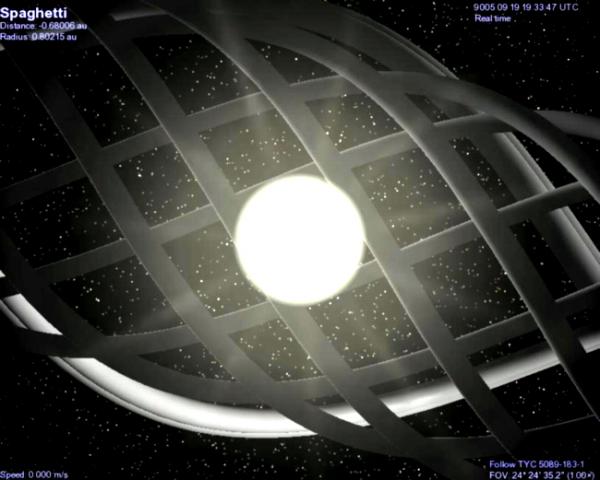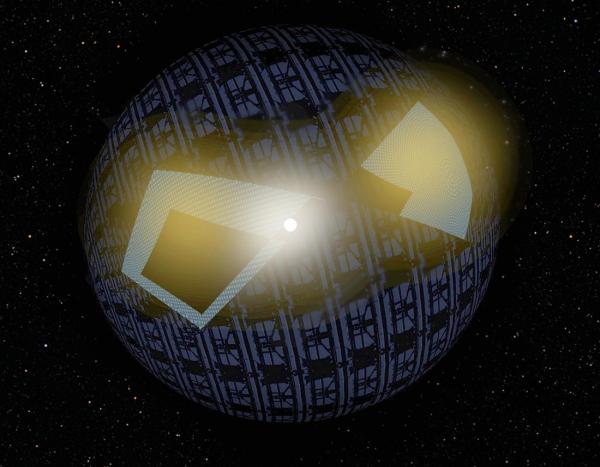BY LETTER
Population Factors in the Terragen Sphere
 Image from Steve Bowers |
Population Growth Factors
Even empires with hundreds of millions of systems to draw from ultimately have to deal with issues of population growth. Thanks to artificial wombs, artificial parenting, and engeneration, population increase is all too easy. With longevity treatments/augments, backups and automated safety infrastructure death rates in a hitech civilisation drop to almost nothing compared to midtech civilisations. Combined with post-scarcity economic systems reducing the cost of raising offspring to similarly negligible expenditures the very fundamental threat of a Malthusian catastrophe is of a concern to modern civilisations. A single replicating sophont doubling every century for ten millenia (subjective) will result in a population of 1.27e30, outmassing Sol. Consequently low growth rates (<<0.1%) are common throughout the terragen sphere, enforced not just by law but a variety of memes working in concert to avoid resource depletion.Strategies to mitigate this issue whilst maintaining modest growth rates include adopting forms and lifestyles with a lower resource footprint (e.g. uploading and running slow), granting temporary exceptions to rapid replication (e.g. forking permitted for a time only, followed by merging) and facilitating emigration to new colonies for those strongly wishing to procreate/replicate.
A small number of localised population explosions have happened in the Terragen Sphere at various times, such as the one at Caph (with a peak population of 50 trillion) and the larger event at Bethsyngaria (maximum population 1.2 quadrillion); but since these locations also suffered almost complete population collapse, these numbers are not generally included in the running total. In other cases rapid growth was established in time, such as in the Quint cybercosm where the population looked to be on track to exhaust all local resources before intervention by the TRHN.
Loci of Population
The vast majority of environments terragens live in are artificial. Thousands of years of development has led to a wide diversity of environments and clades optimised in synergy for different practical, aesthetic and ideological goals. Typically a given sophont will live in one of the following;Processor clusters
From microsats to matrioshkas, from habitat walls to the implants of bionts, computronium pervades nearly every part of the Terragen sphere. Where there is computronium there are often Virtuals; sophonts born, evolved or migrated into digital worlds with an endless variety of features and cultures. Image from Steve Bowers | |
| Cableville, a topopolis in the Mutual Progress empire. | |
Megastructures
Dyson swarms, ringworlds, topopoli and other large megastructures can increase the carrying capacity of any system to an almost unimaginable level. Notable examples include Cog, Kiyoshi, Ain Soph Aur, Metropolis Ring City, Cableville, Kepleria and Oikomene. A third of the corporeal terragen population live on these structures however their distribution across space is very small. A tiny fraction of a percent of terragen systems contain such structures and yet population wise they dominate through supporting quadrillions of sophonts. These are the metropoli of the modern times, the melting pots of civilisation.Space habitats
In the vast majority of terragen systems the dominant environment for corporal beings comes in the form of space habitats. Typical sizes range from 15-40 kilometer long cylinders, with lengths 50% greater than widths, for sophonts wishing to live in a pseudo-gravity environment. The average microgravity habitat is smaller, 1-5km spheres are common, but by dint of exploiting three dimensions of living space can house much greater populations relative to their size. The deviation around the average habitat size is large, for example: the sophonts of the MPA often build a moon-sized environment just for the sheer beauty of a weightless airspace 1000 kilometers across.Space habitats are most often found in orbit around gas giants, forming orbital bands in more populated systems. These environments offer a wealth of resources both in the planet itself and the many moons, rings and smaller satellites they are likely to have. Communication latency and travel time (particularly between resource harvesting sites) are much lower than typical solar orbits, though for many clades and asocial sophonts this can be a reason to avoid such places.
Bubblehabs
Floating habitats on a suitable gas giant allow for extremely large population densities if the atmosphere is seeded with self-replicating bubblehabs. The numbers of sophonts living in bubblehabs is underestimated in the popular imagination. This is in part because of a tendency for civilizations founded there to interact primarily with each other: a single gas giant can support an extremely large and diverse set of persons and polities, distracting the dwellers from 'Outworlders', and even with modern technologies the deep gravity well is a deterrent to travel. In fact, bubblehabs are second only to space-based habs in the number of sophonts they support.(Para)Terraformed Worlds
Worldhoused moons and terraformed planets make two of the smallest categories for terragen habitation. Inefficient in their configuration of mass to surface area and taking excessive energy and time to create they nevertheless occupy a special place in many cultures. Nearly all life currently known can trace its origin back to a garden world (exceptions include Hildemar's knots) and many find living in such an environment, artificial in origin though it may be, gratifying purely on this basis. In addition many see planets as a long-term survival mechanism. In event of total loss of technological infrastructure, be it due to infowar attack or another Technocalypse, suitably large biospheres have enough redundancy to remain stable over megayears without intervention. Consequently a larger proportion of planet dwellers are semperists and ludds.Population Distribution
Across the Terragen sphere, the corporeal (non-virtual) population is roughly distributed as follows:39% - Very Large Megastructures, relative to the total number of Terragen systems these are rare but with extreme populations.
33% - Space habitats, ranging from microgravity singlehabs to 'open-air' structures such as Bishop Rings. Approximately 70% rotate for some level of pseudo-gravity.
11% - Bubblehabs, mostly in the atmospheres of gas giants but also some cool dwarf stars.
9% - Surface settlements/partially-worldhoused moons or planets (primarily the former)
5% - Terraformed/fully-worldhoused moons or planets (primarily the latter)
2% - Miscellaneous environments such as ederworlds, Niven clouds etc.
<1% - Worldships and civilisation ships
<<1% - Naturally occurring garden worlds
 Image from Steve Bowers | |
| Kiyoshi B shell, the second largest suprashell in the Xi Scorpii system | |
Related Articles
Appears in Topics
Development Notes
Text by Ryan B (updated 2019)
From an original article by Anders Sandberg; input from Radtech497, Steve Bowers, Stephen Inniss, Todd Drashner, MacGregor
Initially published on 23 October 2000.
Updated July 2022
From an original article by Anders Sandberg; input from Radtech497, Steve Bowers, Stephen Inniss, Todd Drashner, MacGregor
Initially published on 23 October 2000.
Updated July 2022






